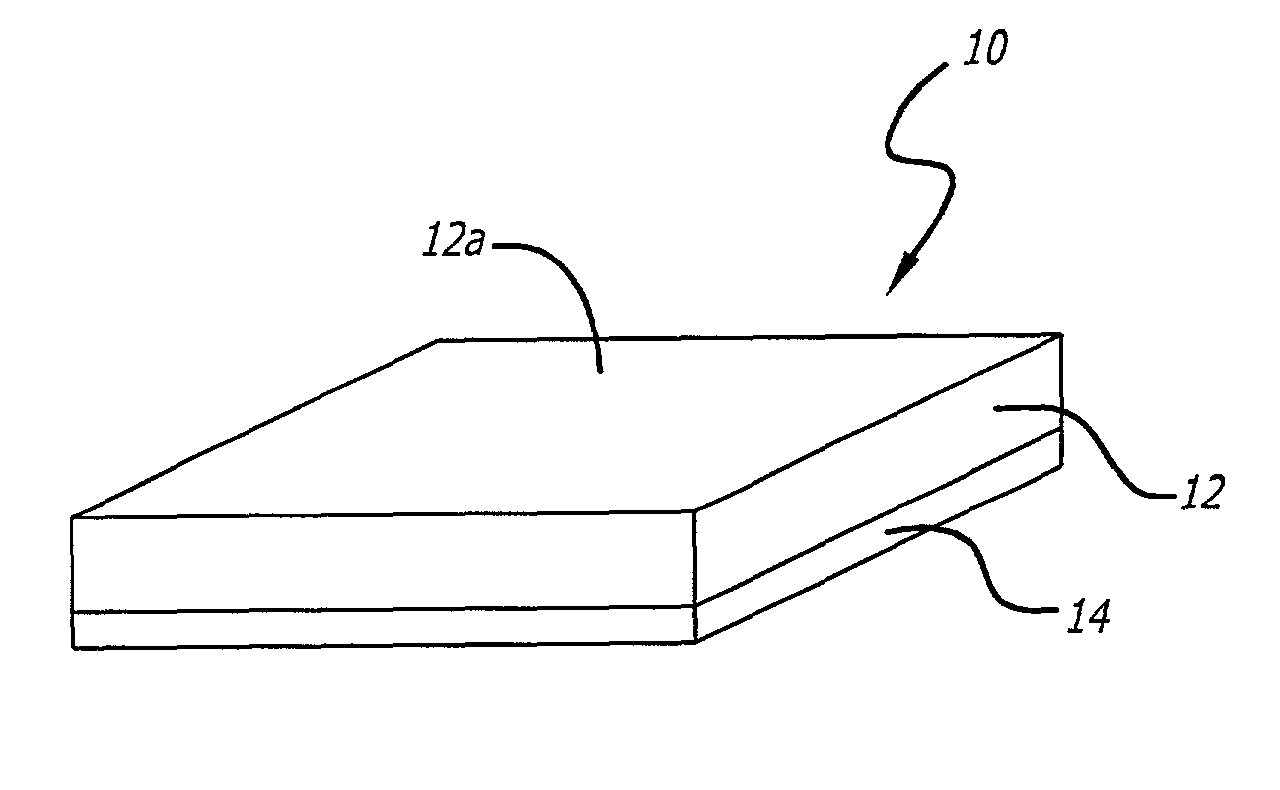Compositions and methods of making temperature resistant protective tape
a technology of protective tape and composition, which is applied in the direction of film/foil adhesives, transportation and packaging, synthetic resin layered products, etc., can solve the problems of low temperature properties, low temperature resistance of products utilizing polyethylene (pe) backings, and the inability to function for the purpose of the constituent components of the tape, etc., to achieve simple and economical methods of making and high temperature resistance
- Summary
- Abstract
- Description
- Claims
- Application Information
AI Technical Summary
Benefits of technology
Problems solved by technology
Method used
Image
Examples
Embodiment Construction
Description (%) Backing Formulation SX522A - silane grafted LDPE 91.0 LDPE 6.95 Carbon black 2.00 Dibutyl tin dilaurate 0.05 Adhesive Formulation Vector .RTM. 4113 (S-I-S) 48.2 Vector .RTM. 4114 (S-I-S) 8.0 Escorez .RTM. 1310 (C.sub.5 Tackifier) 25.7 Adtac .RTM. LV 4.8 Paraflex .RTM. 168 12.8 Irganox .RTM. B215 0.5 Dibutyl tin dilaurate --
[0060] The adhesive was prepared in advance in a sigma blade mixer and then extrusion fed to the calender. Backing materials were dry blended in the required proportions with the catalyst and carbon black contained in precompounded masterbatches. A product comprised of 4 mils of backing and 2 mils of adhesive was formed in a single pass through a 3-roll calender stack under the conditions similar to those described above. The resulting 6-mil tape was identified as X-02042.
2 EXAMPLE 2 Description (%) Backing Formulation SX522A - silane grafted LDPE 96.0 LDPE 2.0 Carbon black 2.0 Dibutyl tin dilaurate -- Adhesive Formulation Vector .RTM. 4113 (S-I-S)...
PUM
| Property | Measurement | Unit |
|---|---|---|
| temperatures | aaaaa | aaaaa |
| temperature | aaaaa | aaaaa |
| temperature | aaaaa | aaaaa |
Abstract
Description
Claims
Application Information
 Login to View More
Login to View More - R&D
- Intellectual Property
- Life Sciences
- Materials
- Tech Scout
- Unparalleled Data Quality
- Higher Quality Content
- 60% Fewer Hallucinations
Browse by: Latest US Patents, China's latest patents, Technical Efficacy Thesaurus, Application Domain, Technology Topic, Popular Technical Reports.
© 2025 PatSnap. All rights reserved.Legal|Privacy policy|Modern Slavery Act Transparency Statement|Sitemap|About US| Contact US: help@patsnap.com


